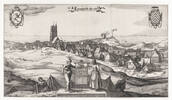De politie in de Lage Landen en haar confrontatie met het nazisme
DOI:
https://doi.org/10.18352/bmgn-lchr.6843Keywords:
Police, Second World WarAbstract
C. Fijnaut, De geschiedenis van de Nederlandse politie. Een staatsinstelling in de maalstroom van de geschiedenis; G. Meershoek, De geschiedenis van de Nederlandse politie. De gemeentepolitie in een veranderende samenleving; J. Smeets, De geschiedenis van de Nederlandse politie. Verdeeldheid en eenheid in het rijkspolitieapparaat; R. van der Wal, De geschiedenis van de Nederlandse politie. De vakorganisatie en het beroepsonderwijs; C. Fijnaut, De geschiedenis van de Nederlandse politie [samenvattend deel]
The Police Force in the Low Countries and its Confrontation with Nazism
In responce to the publication De geschiedenis van de Nederlandse politie by Cyrille Fijnaut, this contribution examines the World War II period and thereby shifts the focus to a comparison between the Netherlands and Belgium. The initial conclusion is that the level of cooperation with the occupational forces was greater in the Netherlands than in Belgium. Yet, despite the monumental nature of Fijnaut’s study, a lot of grey areas and unresolved questions remain concerning both countries. In our view, international comparative research is the correct path to follow in order to make progress on this important theme about the history of the German Occupation and the police force. Its importance is partly supported by the social relevance of this unique confrontation of police services in liberal-democratic countries with a dictatorial system of government.
This review is part of the discussion forum 'De geschiedenis van de Nederlandse politie' (Cyrille Fijnaut).
Downloads
Downloads
Published
How to Cite
Issue
Section
License
Authors who publish with this journal agree to the following terms:
a) Authors retain copyright and grant the journal right of first publication with the work simultaneously licensed under a Creative Commons Attribution 4.0 International (CC BY 4.0) that allows others to share the work with an acknowledgement of the work's authorship and initial publication in this journal.
b) Authors are able to enter into separate, additional contractual arrangements for the non-exclusive distribution of the journal's published version of the work (e.g., post it to an institutional repository or publish it in a book), with an acknowledgement of its initial publication in this journal.
c) Authors are permitted to post their work online (e.g., in institutional repositories or on their website) prior to and during the submission process.
Authors are explicitly encouraged to deposit their published article in their institutional repository.










